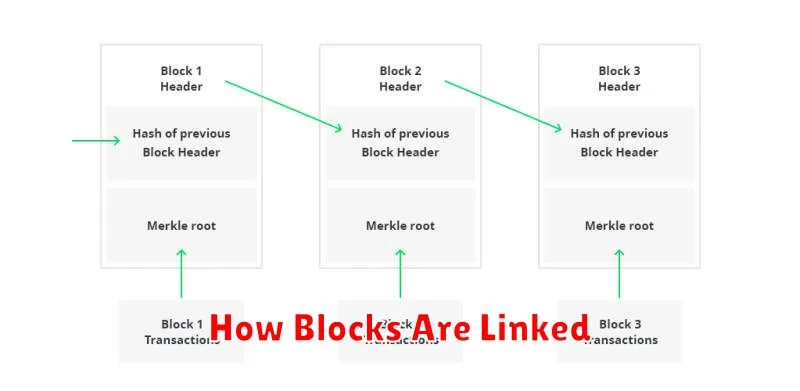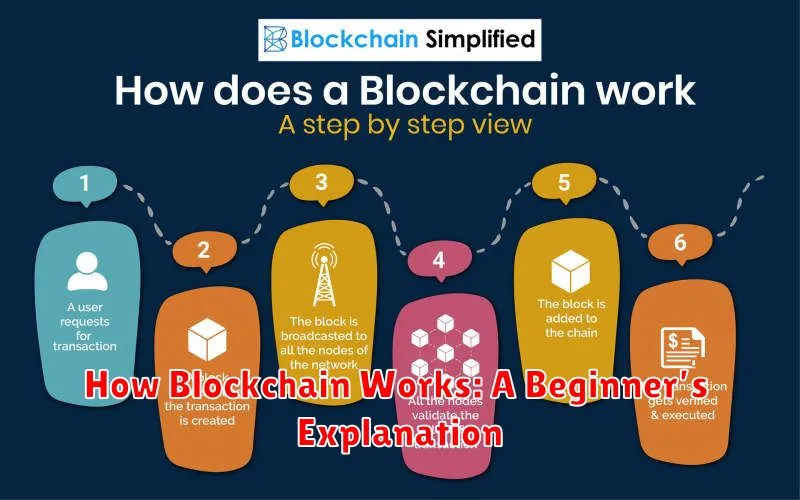Have you heard of blockchain but find it confusing? Are you curious about how this revolutionary technology works? This beginner’s explanation of blockchain will demystify the core concepts and provide a clear understanding of its underlying mechanisms. We’ll explore the fundamental components of a blockchain, including blocks, chains, cryptography, and decentralization. Whether you’re interested in cryptocurrencies like Bitcoin or exploring the broader applications of blockchain, this guide will equip you with the essential knowledge to navigate this exciting field.
This article will break down the complexities of blockchain into easily digestible parts. Learn how transactions are recorded and verified, understand the role of miners in securing the blockchain, and discover the benefits of distributed ledger technology. By the end of this article, you’ll have a solid grasp of what blockchain is, how it functions, and its potential impact across various industries. We’ll delve into the significance of immutability, transparency, and security in the blockchain ecosystem. Begin your journey into the world of blockchain today.
What Is Blockchain Technology?
Blockchain technology is a shared, immutable ledger that facilitates the process of recording transactions and tracking assets in a business network. An asset can be tangible (a house, car, cash, land) or intangible (intellectual property, patents, copyrights, branding). Virtually anything of value can be tracked and traded on a blockchain network, reducing risk and cutting costs for all involved.
A blockchain is a type of distributed ledger technology (DLT) where transactions are recorded with an immutable cryptographic signature called a hash. This makes it extremely difficult to tamper with or alter the data on the blockchain.
Decentralization and Security Explained
Decentralization is a core principle of blockchain technology. Instead of a single entity controlling the network (like a bank), a blockchain is distributed across many computers. This makes it resistant to censorship and single points of failure.
Security is ensured through cryptography. Each block of data is linked to the previous one using a cryptographic hash. This creates an immutable chain of records. Any attempt to alter a block would be immediately detectable because it would change the subsequent hashes.
How Blocks Are Linked

Blocks in a blockchain are linked chronologically, forming a continuous chain. Each block contains a cryptographic hash of the previous block’s header. This hash acts like a fingerprint, uniquely identifying the preceding block. Any change to the previous block would alter its hash, breaking the chain.
This linking mechanism is crucial for security and immutability. If someone attempts to tamper with a block, the subsequent blocks’ hashes would no longer be valid, immediately revealing the alteration. This makes it computationally infeasible to alter past records without detection.
Mining vs Proof-of-Stake
Mining, also known as Proof-of-Work (PoW), is a mechanism where powerful computers compete to solve complex mathematical problems to validate transactions and add new blocks to the blockchain. The first miner to solve the problem gets rewarded with cryptocurrency. This process requires significant energy consumption.
Proof-of-Stake (PoS) is an alternative mechanism where validators are chosen based on the number of coins they hold and are willing to “stake” or lock up. Validators are randomly selected to validate transactions and create new blocks. This system is significantly more energy-efficient than mining.
Uses Beyond Cryptocurrency
While cryptocurrency is the most well-known application of blockchain, the technology’s potential extends far beyond digital currencies. Its core strengths of transparency, security, and immutability make it suitable for diverse industries.
Supply Chain Management: Blockchain can track products throughout the supply chain, from origin to consumer, verifying authenticity and preventing counterfeiting.
Healthcare: Securely storing and sharing patient medical records can improve data integrity and interoperability between healthcare providers.
Voting and Identity Management: Blockchain can create more secure and transparent voting systems and enable verifiable digital identities.
Risks and Limitations
While blockchain offers numerous advantages, it’s crucial to acknowledge its risks and limitations. Scalability remains a significant challenge, as transaction speeds can be slower than traditional systems. Regulation of blockchain technology is still evolving, creating uncertainty in some areas.
Security concerns, while mitigated by the decentralized nature of blockchain, still exist. 51% attacks, where a single entity controls the majority of the network’s computing power, are a theoretical risk. Furthermore, the immutability of blockchain, while a strength, also means errors are difficult to correct.
Finally, the complexity of blockchain can be a barrier to entry for some users and developers. Quantum computing advancements could potentially pose a threat to current cryptographic methods used in blockchain.

